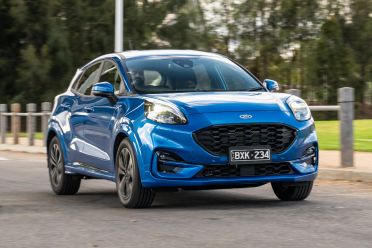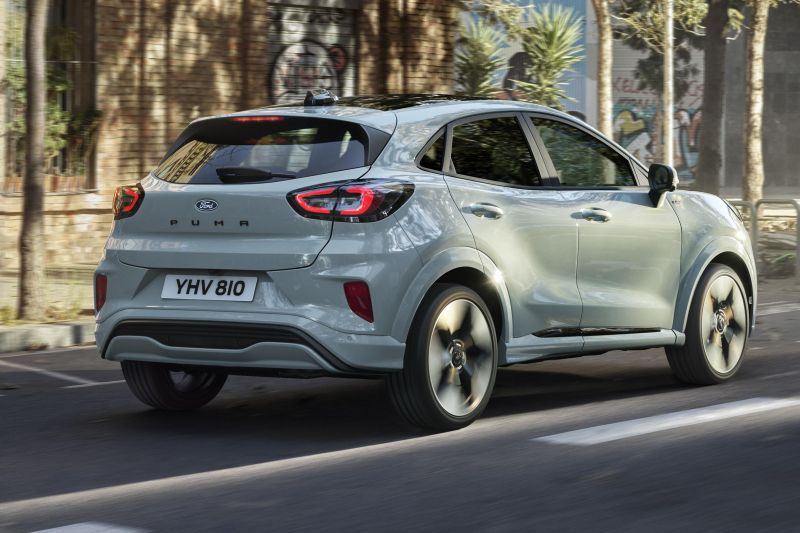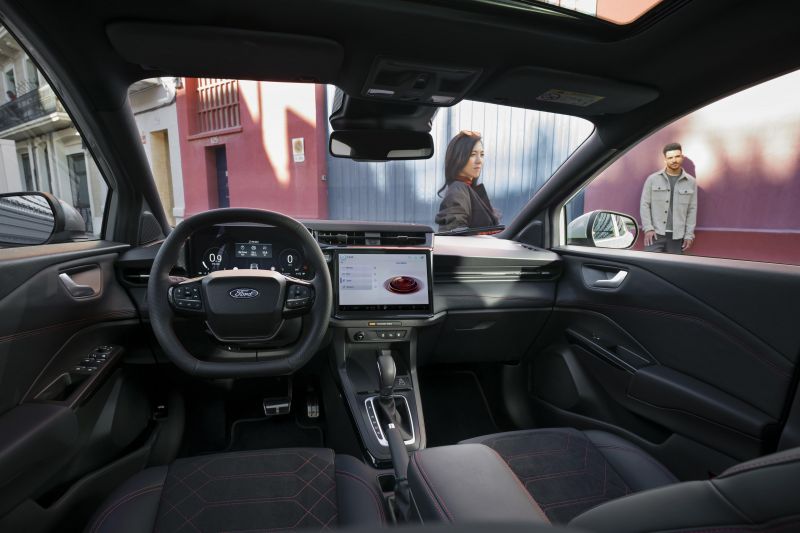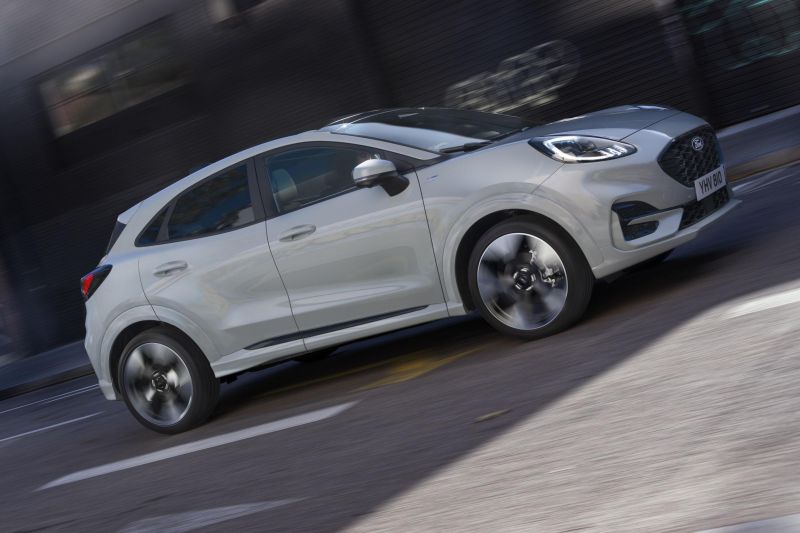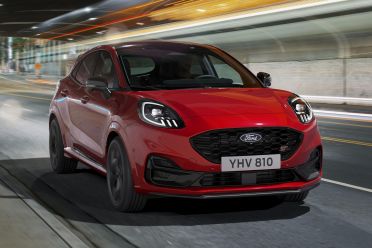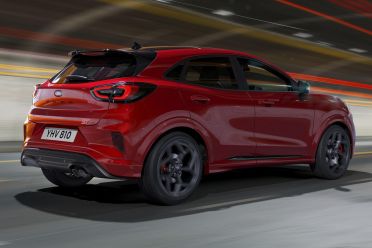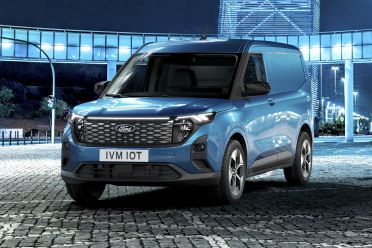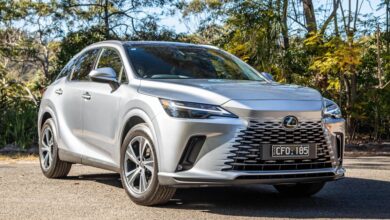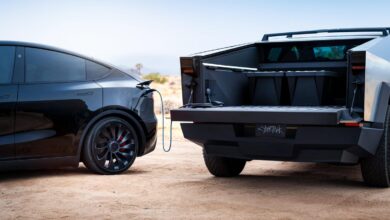The updated Ford Puma we won’t be getting in Australia
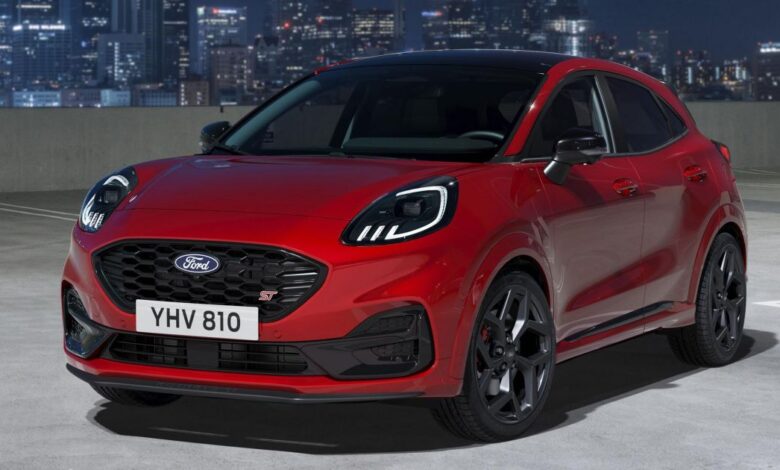
Well, to be clear, we will be getting the revised Ford Puma crossover, just not quite the one that was released overnight in Europe.
The Puma seen here is a facelifted version of the crossover that made its debut in 2019, and is powered by a selection of turbocharged petrol engines. This type of Puma is being discontinued in Australia by the middle of the year.
There will however be an all-electric version of the upgraded Puma, to be known as the Puma Gen-E. This has yet to be unveiled, but it will be sold in Europe, and has been confirmed for Australia.
We don’t know, at this stage, how much visual differentiation there will be between the petrol Puma and its Gen-E sibling.
Externally it’s easy to pick out the updated Puma thanks to its redesigned grille with the Ford badge in the middle, the design of which is reminiscent of both the recently axed Fiesta and the Focus, which has been discontinued in Australia but which will soldier on in Europe until 2025.
There are also new graphics for the headlights, including a new design for the LED daytime running lights and “glare-free” high beams. New dynamic matrix headlights are available on high-spec variants.
It’s on the inside where the most substantive changes have been made. The entire dashboard has been redesigned to accommodate a larger digital instrument cluster and infotainment touchscreen.
The instrumentation screen now measures 12.8 inches diagonally, up 0.5 inches from before. Ahead of the driver is a new two-spoke steering wheel, which thankfully retains physical buttons, while the instrument cluster is no longer covered by a cowl.
In the centre of the dash is a 12.0-inch touchscreen that’s four inches larger than before, runs Ford’s latest Sync 4 operating system, and has a processor that’s twice as fast.
It now supports wireless Android Auto and Apple CarPlay smartphone mirroring, comes with baked-in Alexa voice recognition, and 5G mobile internet connectivity.
A 10-speaker Bang & Olufsen sound system is available, but physical controls for the climate control system are no longer present. These have been replaced by a toolbar that’s permanently displayed on the touchscreen.
The central air vents have been moved to a spot above the touchscreen, while underneath there’s a physical volume control knob and radio off switch, as well as buttons to enable/disable automatic engine start/stop, view the car’s parking cameras, and turn on the window demisters.
USB-C and USB-A ports are in the centre tunnel, as is a new sliding arm rest for the driver and front passenger. The door cards have been revised, with the arm rests modified to be much flatter than before, and the window controls now almost horizontal.
On the safety front, the revised Puma’s adaptive cruise control with stop and go functionality gains lane centring. There’s also an improved blind-spot monitoring system, active rear cross-traffic assist, reverse brake assist, predictive speed assist, and a 360-degree camera system.
Under the bonnet, the Puma’s drivetrain options have been pared back. The only engine available is a 1.0-litre turbocharged three-cylinder petrol motor with a 48V mild-hybrid system.
In base models, this drivetrain develops a total of 92kW and 170Nm, and can be paired with either a six-speed manual or seven-speed dual-clutch transmission. A more powerful 116kW/190Nm version is also available exclusively with the seven-speed automated gearbox.
Once again there’s a ST variant aimed at driving enthusiasts with retuned suspension and handling, larger 19-inch wheels, and styling tweaks.
Unfortunately the 147kW 1.5-litre turbocharged four-pot and its six-speed manual have been discontinued, leaving the 130kW version of the 1.0-litre three-cylinder mild hybrid paired to a seven-speed dual-clutch transmission as the sole drivetrain option.
Both the just unveiled petrol Puma and upcoming electric Gen-E utilise the same front-wheel drive architecture that once hosted the Fiesta, and now also serves as the base of the Transit Courier.
All versions of the Puma and Transit Courier will be built in Craiova, Romania, where Ford has a joint venture factory with Turkish firm Otosan.
Details about the Puma Gen-E’s drivetrain have yet to be revealed, but the e-Transit Courier has a 100kW motor driving the front wheels, and supports DC fast charging up to 100kW and AC charging up to 11kW.
MORE: Everything Ford Puma

